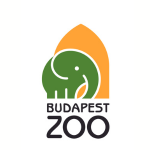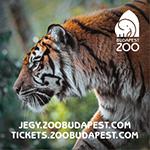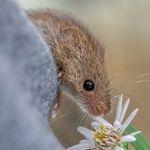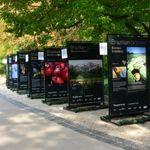- HUNMagyar
News
Visit the Budapest ZooJune 13, 2023
Come and walk around our historic buildings, explore our shady walkways and get to know our incomparably collection of animals! Opening hours in August weekdays 9.00-18.00, weekeds 9.00-19.00.
On March 27-28, entry at the Main Gate will be temporarily suspendedMarch 26, 2023
The main entrance of the Zoo will be closed on March 27-28, 2023 due to technical reasons, so we provide our visitors with entrance at the Elephant Gate, 50 meters from the Main Gate, next to the Elephant House building.
Carnival at the ZooFebruary 1, 2023
On February 4th and 5th spectacle feedings, seal training, face painting, dance hall and the Bóbita Band's Carnival of Animals interactive activity, as well as craft programs and many more exciting events await guests.
New online ticketing system without convenience feesJanuary 27, 2023
From January 24, 2023, our new online ticketing system without convenience fees or hidden costs awaits visitors to the Zoo at tickets.zoobudapest.com.
Our online ticket sales system will be renewed in January 2023December 30, 2022
Ticket sales at the ticket offices of the Budapest Zoo and Botanical Garden continue to be uninterrupted, due to the transformation of the online systems, the option to change tickets electronically will be temporarily suspended from January 1, 2023.
Huge success at ZOODisputa in the ZOOPedagogy sectionDecember 12, 2022
Participants of the education section of the ZOODisputa and ZOOPedagogy conference had the opportunity to take a look at the educational sessions on animal protection with the help of the Department of Education at the Budapest Zoo.
Hungarian zoo specialists meet in BudapestNovember 29, 2022
The annual meeting of Hungarian zoo specialists, the Zoo Disputa, is hosted by our zoo this year. The central theme of the 2+1 day conference is animal protection and the role of zoos in animal welfare.
Santa in the Budapest ZooNovember 29, 2022
Have you ever wondered what the zoo might look like around Christmas? Join us on Tuesday and discover our zoo on Santa Claus Day.
Harvest mouse Gala presents the star of the yearNovember 16, 2022
Zoo visitors can learn the secrets of the Harvest mouse, the winner of the mammal of the Year award, at our science and education programs for children and young adults on Saturday 19 November from 9 am-3.30 pm.
Eighty thousand visitors viewed the photo exhibition of Brazil's treasures at the Budapest Zoo and Botanical GardenNovember 2, 2022
In September and October, visitors to Budapest could not only discover the zoo and botanical garden but also enjoy a special photo exhibition, courtesy of the Embassy of Brazil, as they walked from the Main Gate Square.









